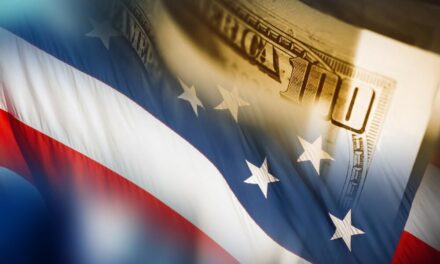My wife works for a major pharmacy retail company.
When she came home the other day, she told me something that really got me thinking.
She said her company issued a mandate restricting the sale of wrapped coins to consumers. Basically, employees were told if someone wanted to swap bills for a couple of $10 rolls of quarters, they were discouraged from doing that.
The mandate came on the heels of Federal Reserve Chair Jerome Powell announcing that the pandemic has created a national coin shortage.
As the coronavirus took hold across the country, the U.S. Mint slowed production of coins because of measures put in place to protect workers making them.
However, when the country started to reopen and businesses came back online, demand for coins was outpaced by the coins in circulation… creating a national coin shortage.
So I started thinking about a potential solution to the coin shortage and it hit me — digital currency.
Now Is a Good Time to Stop Using Cash
A few weeks back, I wrote a piece about how I have noticed a trend in shopping.
I’ve noticed more and more people using their smartphones to pay for items as opposed to reaching into their wallets.
In the article, I wrote about how COVID-19 has transformed how we do things. Consider the $20 bill in your purse or wallet and think about the thousands of people who have handled that bill.
Using the context of the COVID-19 pandemic, it doesn’t paint a rosy picture for handling physical currency, does it?
By using digital currency, there’s no need for physical money. In this day, what’s more important is there is no need to handle money.
The History of Coin Shortage
Now, I don’t want to give you a history lesson, but it’s important to understand that this is not the first time we’ve experienced a coin shortage in the U.S.
In 1964, the country suffered the same issue. Commercial banks were receiving less coins from depositors — pushing demand for coins even higher.
The answer: The Federal Reserve backed legislation providing funds to build a new mint in Philadelphia. Basically, the solution was to make more coins.
Then, in 1999, parts of the country were hit with a shortage of pennies, despite the fact that mints produced 3.6 billion pennies between January and April of that year.
The solution was to lift restrictions banks had on accepting coins for deposit — like the requirement that coins had to be wrapped.
We aren’t building a new mint and there are no restrictions on banks accepting coins. So this time around, the solution needs to be different.
The Digital Currency Saving Grace
More and more businesses, like the one my wife works for, are either restricting the outflow of coins or asking for patrons to pay with exact change.
But by using digital currency, those barriers don’t exist.
Using contactless payment ensures customers pay the exact amount for their items. That eliminates the need for businesses to have a good amount of their cash on hand in coins.
The more people use digital payments, the less impact a coin shortage has.
What’s more, keeping the coronavirus in mind, it’s difficult to contract an illness from dollars and coins when you aren’t touching them in the first place.





